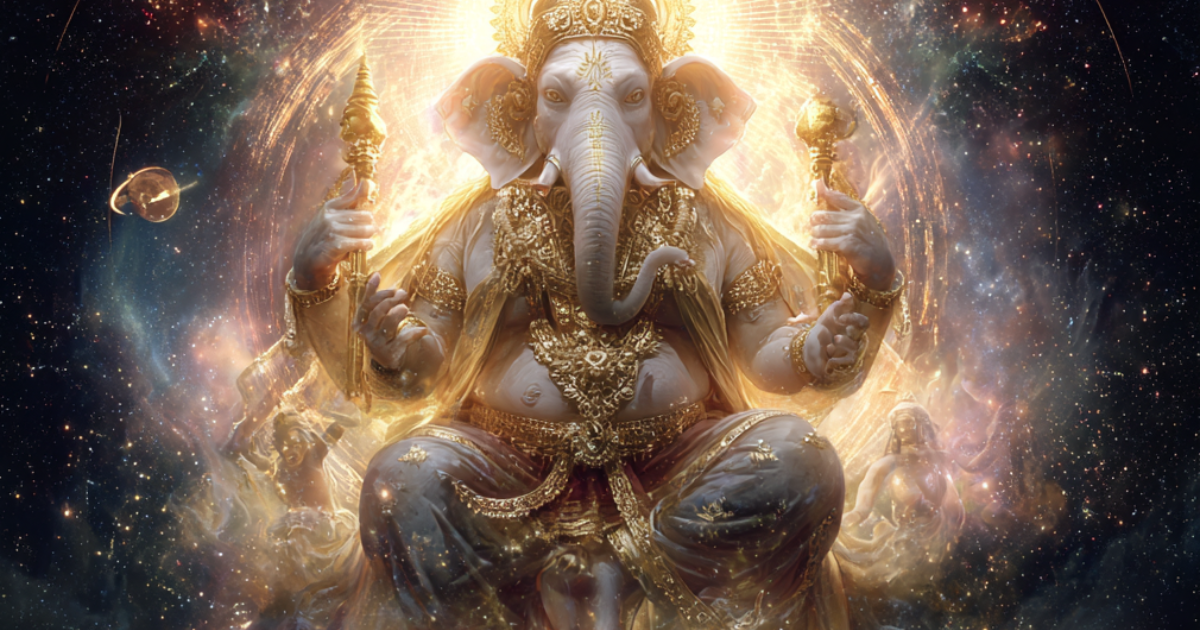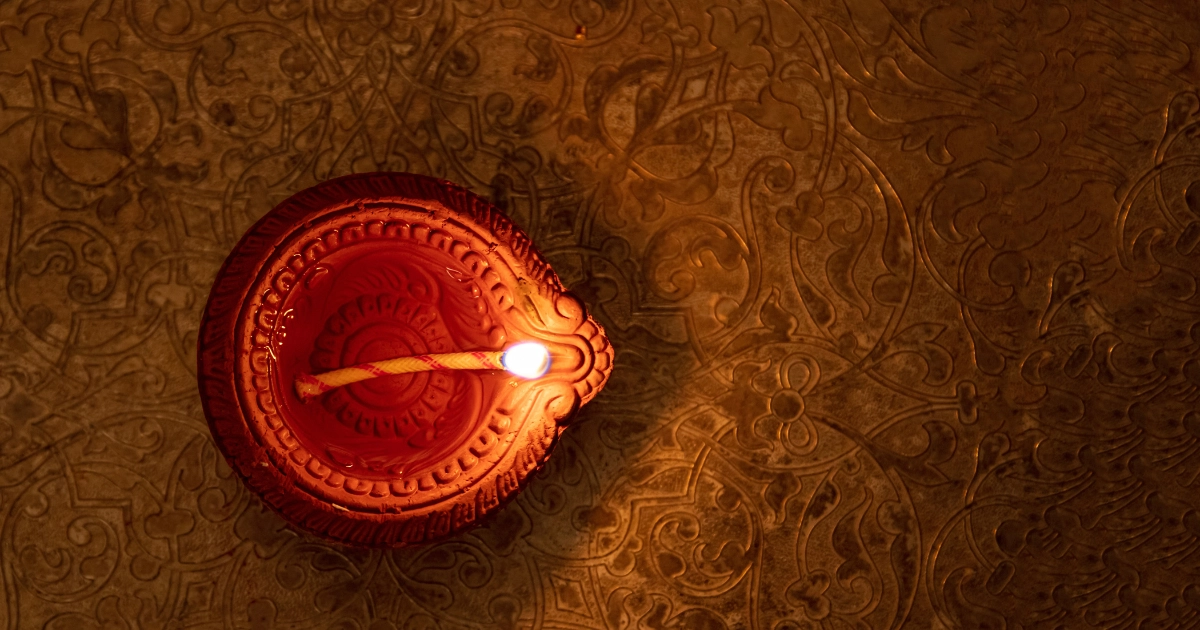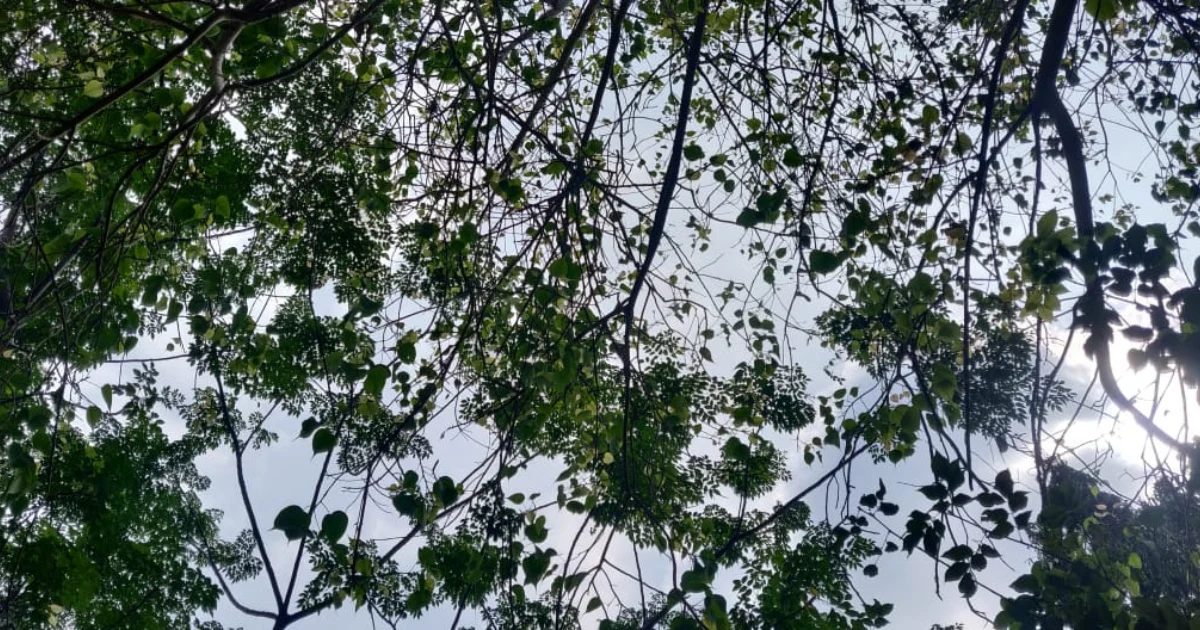Introduction: The Infinite in the Elephant-Headed One
Who is Gaṇeśa? To most āstikas in Bhārata, he is the beloved Vighnahartā, the remover of obstacles, the sweet-loving, compassionate friend who is remembered before all auspicious beginnings. His gentle smile blesses weddings, businesses, journeys, examinations, and even the opening of scriptures. He is the lord of the threshold, the keeper of doorways, the one whose name itself is a mantra of courage.
Yet, behind this tender, approachable image lies a truth far vaster: Gaṇeśa is not merely a deity of beginnings, but the very Beginning itself. He is the Ādi-Tattva, the eternal Paramātman who upholds cosmic balance. In the Gaṇeśa Purāṇa, one of our ancient paurāṇika treasures, he is revealed as the Supreme Principle—the source from whom all devas, all powers, all worlds draw sustenance.
The ṛṣis teach: even Brahmā, Viṣṇu, and Śiva bow before Gaṇapati. Without his anugraha, their actions do not bear fruit. He is both the subtle brahman contemplated by yogis and the gracious icon worshipped in homes and temples.
Let us journey into this Purāṇa, where stories sparkle with wisdom, where curses transform into blessings, where asuras born of tapas shake the heavens, and where even the devas are humbled until they rediscover their refuge at the feet of Gaṇeśa.
The King Who Lost Everything: Somakānta’s Curse

Long ago in Saurāṣṭra, lived a noble king, Somakānta. Like the moon after whom he was named, he shone in glory—until fate turned. Struck by the dreaded affliction of kuṣṭha (leprosy), the king’s body decayed, his beauty faded, and his courtiers abandoned him. Shunned, he wandered the forests alone, each step heavy with shame and despair.
But dharma never forsakes one who has a spark of merit. In the solitude of the forest, he met the great ṛṣi Bhṛgu, his ancestor. With compassion, Bhṛgu revealed to the broken king the eternal truth:
“O Somakānta! Know that no endeavour in this universe succeeds without first invoking Śrī Gaṇeśa. Even devas and ṛṣis have stumbled until they surrendered to him. Only through his worship can the stains of karma be erased and suffering be transformed into renewal.”
The ṛṣi instructed the king to observe the caturthī-vrata in the sacred month of Bhādrapada: fasting, worshipping Gaṇapati, offering flowers, fruits, and heartfelt devotion. “Do this with śraddhā,” he said, “and you shall be healed.”
The king bowed, filled with newfound hope. Thus, the Purāṇa proclaims from the very outset: Gaṇeśa-bhakti is not a peripheral ritual, but the very doorway to deliverance.
Two Ways of Worship: The Mystery of Gaṇeśa
The Gaṇeśa Purāṇa unfolds a profound secret: Gaṇeśa may be worshipped in two distinct yet harmonious ways.
- As the Paramātman: the all-pervading supreme spirit, beyond form, beyond attributes, the very Brahman whom the Upaniṣads declare. To worship him thus is the way of meditation, silence, contemplation.
- As the Mūrti, the Saguṇa Deity: the tender icon of devotion, adored with garlands, lamps, modakas, songs, and the great festival of Gaṇeśa Caturthī, when entire towns and villages resound with “Gaṇapati Bappa Moryā!”
This duality is not a contradiction but a completion. The Paramātman is the vast ocean; the mūrti is the accessible spring at our doorstep. Through both, Gaṇeśa embraces the philosopher and the villager, the renunciate and the householder alike.
Gṛtsamāda: From Curses to Realization

One of the Purāṇa’s most stirring tales is that of Gṛtsamāda, whose life became a testament to the transforming grace of Gaṇeśa.
His grandfather, King Bhīma of Vidarbha, had longed for a child. Through Gaṇeśa’s blessings, he and his queen begot a son, Rukmāṅga. But destiny is a web woven with twists.
One day, while lost in the forest, Rukmāṅga entered a ṛṣi’s hermitage. The ṛṣi’s wife, seeing his radiant youth, was overcome with desire. When he refused her advances, anger blazed, and she cursed him with kuṣṭha (leprosy). Indra, ever restless, assumed Rukmāṅga’s form, gratified her, and from their union was born Gṛtsamāda.
The boy grew to be a scholar among ṛṣis. Yet destiny struck again. At a great śrāddha in Magadha, envious ṛṣis exposed his secret birth, mocking him as illegitimate. Humiliated, he confronted his mother, who confessed the truth. Rage consumed him—he cursed her to become a thorny jujube tree after death. She, in turn, cursed him to become a brahma-rākṣasa.
And yet, here is Gaṇeśa’s miracle. Curses became the crucible of transformation. Rejected, Gṛtsamāda withdrew into solitude. Balancing upon his toe, eyes unblinking, he plunged into tapas, invoking Gaṇeśa. His austerity was so fierce that Gaṇeśa himself appeared, effulgent as the sun, vast as brahman.
The Lord lifted the fallen ṛṣi, blessing him with eternal wisdom, preeminence among brāhmaṇas, and a sacred grove for meditation. The brahma-rākṣasa became revered as a ṛṣi.
What others scorned, Gaṇeśa sanctified. Thus, Gṛtsamāda’s tale teaches: what the world calls shame, Gaṇeśa can turn into glory.
The Foundling and the Birth of Tripurāsura

During his tapas, Gṛtsamāda once beheld a wondrous sight: an infant lying bloodied, abandoned. When he opened his eyes again, the child stood radiant, declaring:
“Father, Mother — you are both to me. I am sent by the Lord himself.”
The ṛṣi adopted the child and taught him the sacred mantra Oṃ. The boy, filled with zeal, undertook his own tapas of unimaginable intensity. For thousands of years, he stood on one leg, breath restrained, senses subdued, worshipping Gaṇeśa.
At last, the Lord appeared. “Ask your boon,” he said. The boy asked not for wealth but power: power vast as the three worlds.
Gaṇeśa granted:
- Dominion over three cities—iron, silver, gold.
- Immortality except at the hands of Śiva.
- Sovereignty over devas, asuras, and mortals.
- And finally, absorption into the Supreme after death.
Thus was born Tripurāsura, destined to shake heaven and earth.
Tripurāsura’s Rise: When Tapas Turns into Tyranny

Tripurāsura grew swiftly, conquering kings, humbling ṛṣis, and erecting an empire of fear. But unlike other asuras, his attack was not mere violence. He waged war upon dharma itself.
- He closed yajñas and stopped sacrifices.
- He silenced the chanting of the Vedas.
- He mocked temples, obstructed ancestor offerings.
- He turned hearts away from the devas.
His cities rose gleaming: iron, silver, gold, while the worlds of the devas crumbled.
Indra fell.

Brahmā retreated. Viṣṇu lay in the ocean. Śiva abandoned Kailāsa. The once-radiant devas roamed the mountains, pale and starving, stripped of their glory.
What irony! The asura who mocked them was himself empowered by Gaṇeśa’s grace.
Nārada’s Counsel: The Forgotten Refuge

It was then that Nārada muni appeared, vīṇā in hand, voice like a thunderclap of truth.
“Fools! Why do you wail? Do you not see? The strength of Tripurāsura comes from the very Lord you have neglected. Only Gaṇeśa can restore balance. Meditate upon him. Chant his thousand names. Without him, there is no victory.”
Thus awakened, the devas performed tapas together, surrendering their pride. For the first time, they sought not just yajña but contemplation, not just offerings but meditation. They recited:
“Oṃ Śrī Gaṇeśāya Namaḥ!”
Their austerity moved the Lord, but he chose to act with guile.
The Divine Architect: Gaṇeśa in Disguise

Disguised as a humble architect, Gaṇeśa approached Tripurāsura. “O mighty king,” he said with folded hands, “I can build for you cities unmatched by heaven itself.”
The asura, swollen with ambition, agreed. Thus, the three cities: iron, silver, gold — rose in splendor.
When the task was done, the architect asked for his fee: the image of Cintāmaṇi Gaṇeśa that adorned Kailāsa. For Tripurāsura, this seemed trifle. He sent messengers to Śiva, demanding it with threats.
Śiva’s patience shattered. Rage flared. War was inevitable.
The War of the Three Cities

The devas marched, but again, they fell. Indra’s thunderbolt shattered, armies scattered, and even Śiva was forced into hiding.
At last, guided by Nārada, Śiva himself performed Gaṇeśa’s tapas — ten years of austerity, chanting a thousand names of the Lord. Gaṇeśa appeared, radiant beyond description:
“Even the Vedas and śāstras cannot comprehend me fully. But I am pleased. Take these weapons, and you shall destroy the three cities.”
Blessed, Śiva ascended his chariot. He released fiery arrows into the sky.
The iron city melted. The silver city crumbled. The golden city burned.
At that moment, Tripurāsura realized his fate. With a final act of surrender, he shed his asuric form, blazing like a meteor, and merged into Gaṇeśa’s supreme essence.
No defeat, no destruction, but absorption.
Dhārmika Lessons
The Gaṇeśa Purāṇa here offers deep dhārmika lessons:
- From Gṛtsamāda: Rejection and curses can be seeds of awakening. What the world mocks, Gaṇeśa sanctifies.
- From Tripurāsura: Power without humility turns against dharma. Even devotion, if tainted by pride, becomes destructive.
- From the Devas: Even the mightiest fall when they forget Gaṇeśa. Only by bowing to him is balance restored.
Most profoundly, the story shows that Gaṇeśa does not discriminate. He empowers both ṛṣi and asura. He grants boons freely, but it is dharma that determines their fruit.
Epilogue: Why We Still Call upon Gaṇeśa
Every Gaṇeśa Caturthī, when clay vigrahas are installed in homes, when modakas are offered, when chants of “Śrī Gaṇeśāya Namaḥ!” rise with drumbeats, we are not just celebrating a cultural festival. We are re-enacting cosmic truth.
We are Somakānta healed of affliction, Gṛtsamāda rising from shame, Tripurāsura burning away pride, and the devas rediscovering humility. We are reminding ourselves that no beginning is auspicious, no journey fruitful, until we bow to Gaṇeśa.
In a world filled with ambition, confusion, and upheaval, his story whispers to us: Ego must bow, humility must rise, only then do obstacles dissolve.
Thus, Gaṇeśa is not merely a remover of obstacles. He is the eternal guardian of dharma, the Supreme who turns curses into blessings, downfall into renewal, defeat into liberation.
Bibliography – Traditional Sources
- Gaṇeśa Purāṇa – A Mahāpurāṇa dedicated to Śrī Gaṇeśa, consisting of Upāsanā-khaṇḍa (worship section) and Krīḍā-khaṇḍa (narrative section). Critical editions published by Oriental Research Institutes, Pune and Mysore.
- Mudgala Purāṇa – Companion Purāṇa describing eight forms of Gaṇeśa, their symbolism and līlās.
- Śiva Purāṇa, Rudra-saṃhitā – Contains accounts of Gaṇeśa’s birth and supremacy among devas.
- Skanda Purāṇa – Describes various gaṇeśa-vratas and praises of Vighnarāja.
- Varāha Purāṇa and Brahmavaivarta Purāṇa – Contain references to Gaṇeśa as supreme.
- Gaṇeśa Sahasranāma (various recensions) – A litany of a thousand names found in multiple Purāṇas, emphasizing Gaṇeśa’s all-encompassing nature.
- Gaṇapati Atharvaśīrṣa (Upaniṣad) – It declares: “Tvam Brahmāsi, Tvam Viṣṇurasi, Tvam Rudrasis…” affirming Gaṇeśa as Brahman itself.
All images are created by the author using Midjourney AI.






